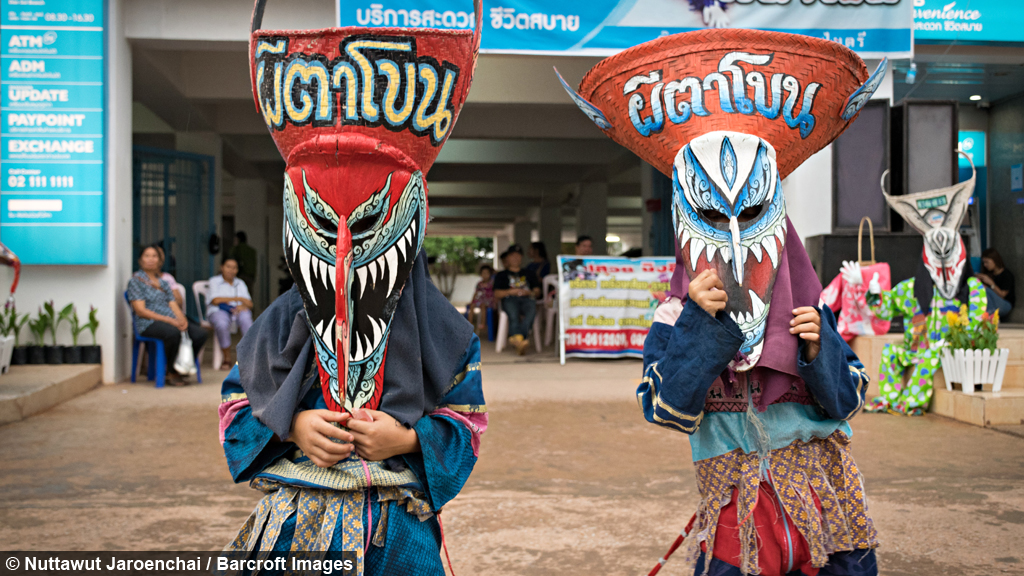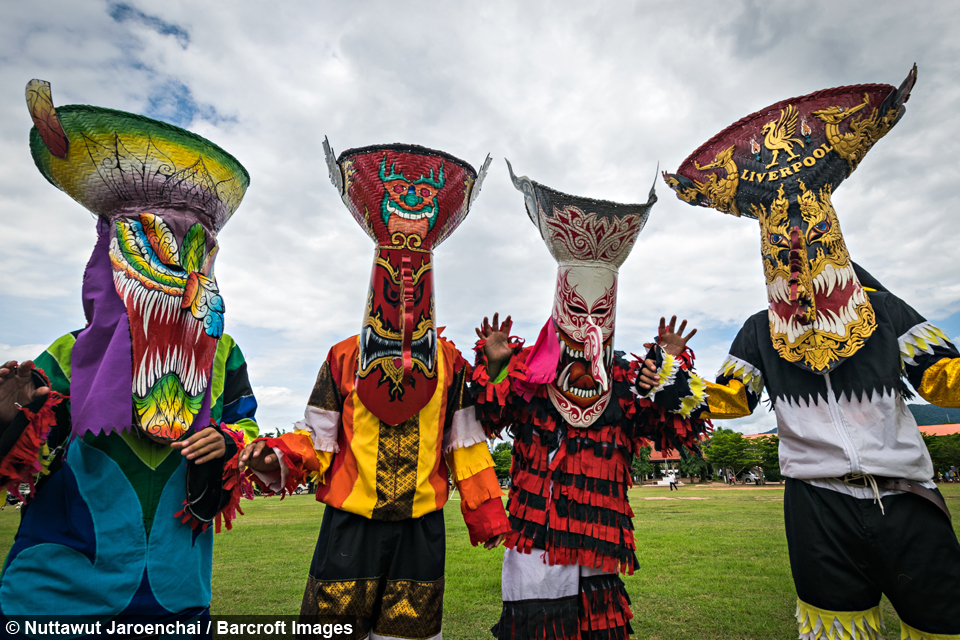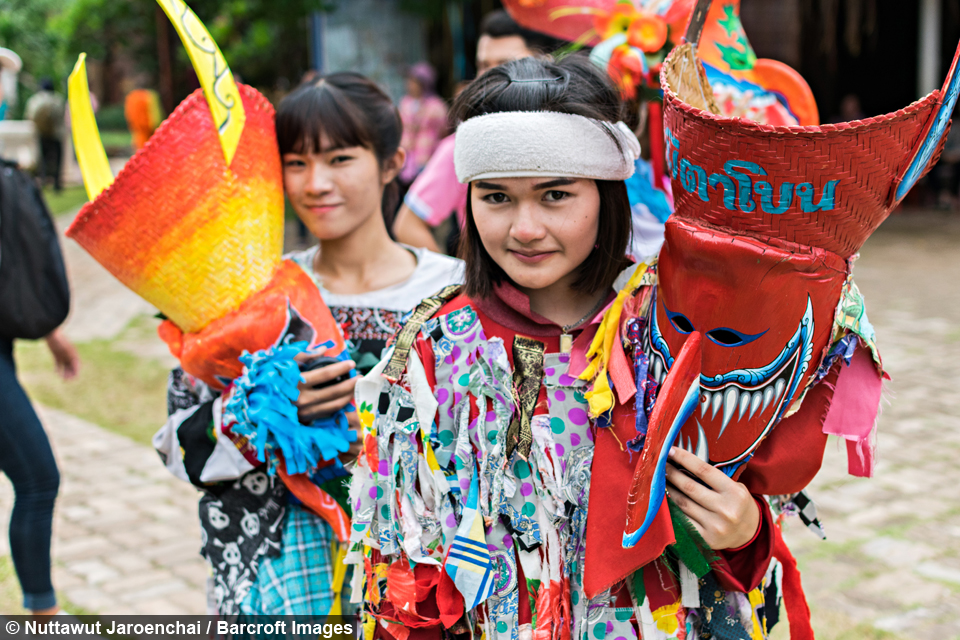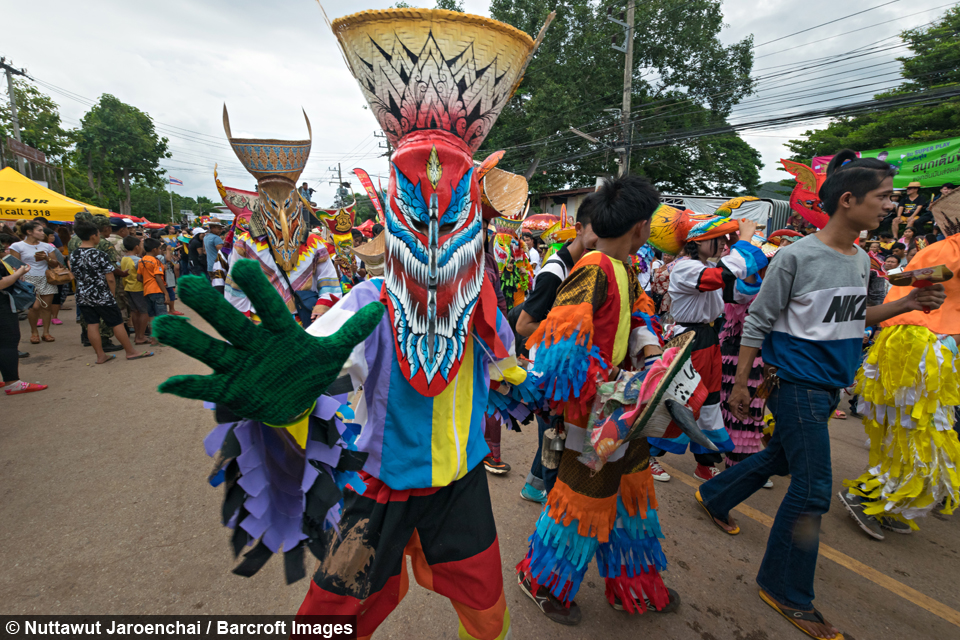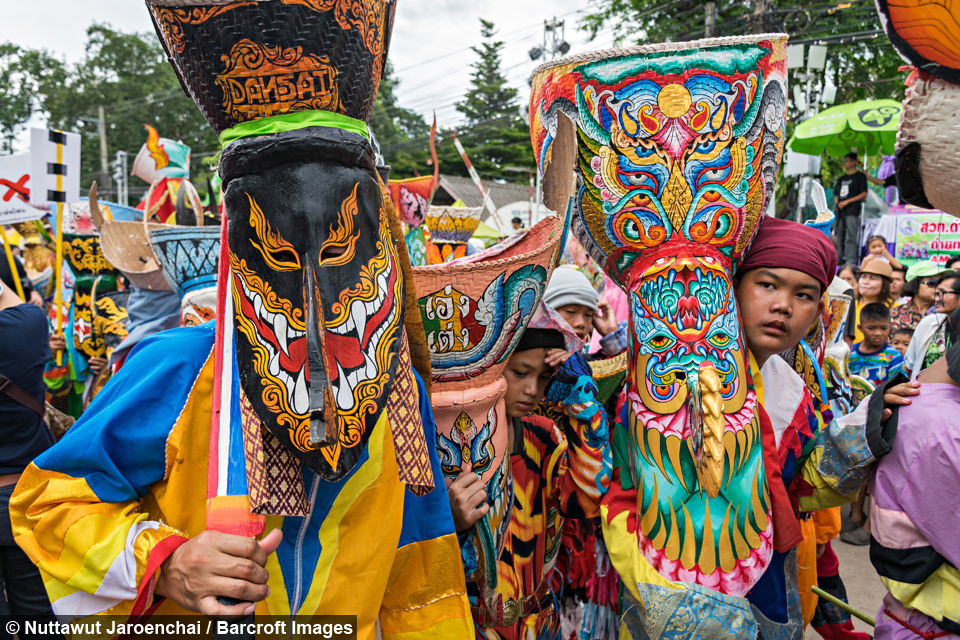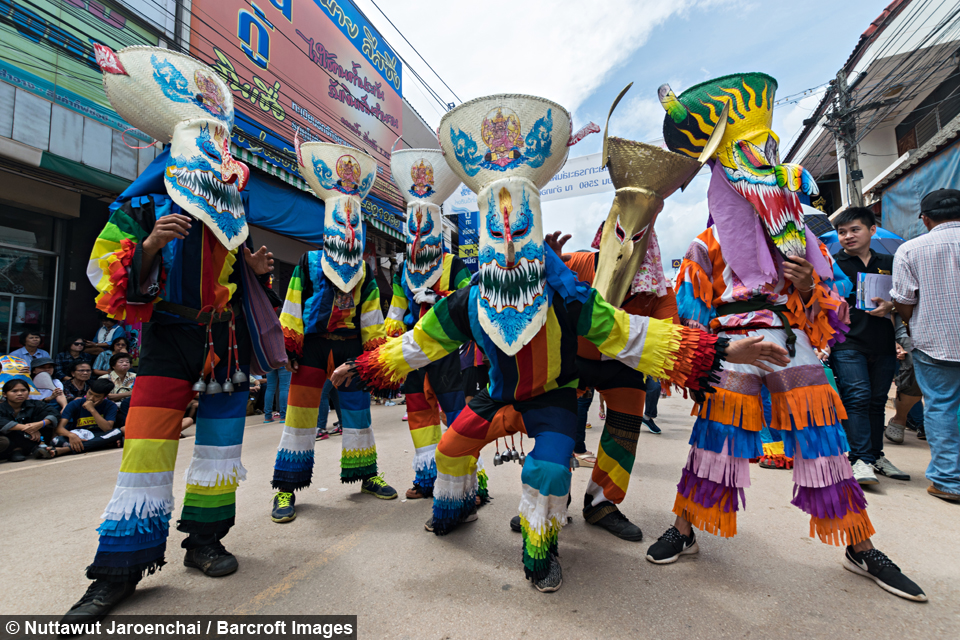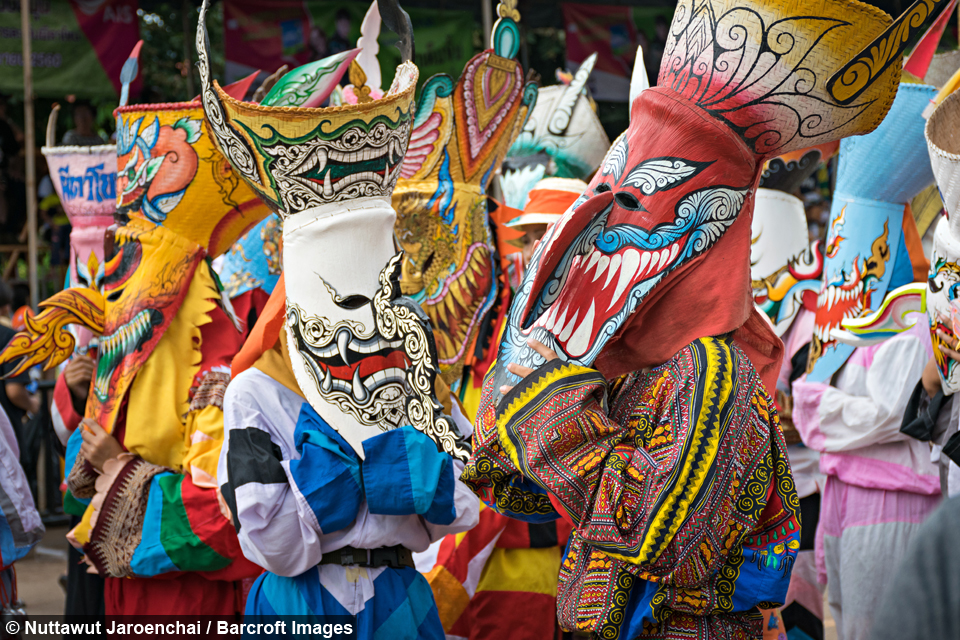Thailand's Phi Ta Khon festival
By Bunmi Adigun @Bunmi_Adigun
Scroll down for the full story
The Phi Ta Khon festival, which translates in English to the Ghost festival, is one of many events that take place over the course of three days in the small town of Dan Sai in the north east of the country.
You would be forgiven for thinking that Halloween came early this year as many in attendance showcase a variety of scary looking masks.
During the celebrations revellers wear colourful costumes and masks made from rice husks or coconut leaves, which are decorated with depictions of ghosts.
Thai photographer Nuttawut Jaroenchai documented the amazing event on his visit to northern Thailand.
He said: “I was excited to see people wearing ghost masks everywhere because this was the first time I had ever been to the festival. I think this festival is one of the most unique festivals in the whole of Thailand.”
The festival tells the story of Vessantara one of the reincarnations of Buddha, who was banished from his town by his people for giving a sacred elephant that brought rain to a neighbouring village suffering from a drought.
After years of doing good deeds during his exile the towns folk and his father, the king, begged for forgiveness and invited him back.
On his return to the town he was followed by wild animals and spirits from the nearby jungle hence the reason people wear ghost masks during the festival.
The true origin of the festival is still a bit of a mystery as details of when it started are vague and inconsistent.
Nuttuwut said: “Nobody knows exactly when the festival began some say it began in the 50's and some say they’ve been celebrating the festival for more than 400 years. It’s very difficult to know how long the festival has been going.”
Another unique feature of the festival are the hundreds of wooden phallus’ worn by the participants of the event as they make their way through the town, these are a symbol of fertility.
Young men chase and tease women of the town with the wooden sculptures as per the tradition of the festival.
During the three days of the festival celebrants take part in different rituals and religious customs which are a combination of three different festivals.
On the first day of the festival locals go to the nearby Mun and Sork River where they call upon, Phra Upakut a revered monk among buddhists in the north of Thailand and ask for his protection and good will.
The second day of the festival is the highlight as this is when the masks and costumes are paraded throughout the town, by the third and final day festival goers conclude the event at a local temple.
He added: “This festival combines three festivals together. The first day is the Phra Upakut ceremony and on day two is the main event, Phi Ta Khon and the Bung Fai also known as the rocket festival where participants fire home made rockets into the air. On the final day the last festival known as Bun Pha Wet takes place at a local temple in which worshippers pray most of the day.”
